- Home
- Michael White
Conversations With Isaac Newton Page 4
Conversations With Isaac Newton Read online
Page 4
And, of course, conducting these experiments was extremely risky, was it not?
Indeed it was, very dangerous. I don’t think many people realize just how dangerous it was. Alchemy was not only illegal and punishable by death: if any of my many enemies in the academic world had gleaned the merest fraction of my work as an alchemist I would have been ruined.
But you believed in the path you were following and you risked the danger.
I had no choice. You see, I have been aware since my earliest days as a student that I am very special. I have known almost my entire life that I was created by the Lord to serve a higher purpose. I could not turn away from this calling – that would have been the ultimate sin.
So what exactly were you trying to do?
The objective of all alchemists is to forge the Philosophers’ Stone – a material which can (on the most fundamental level) turn any base metal into gold. The first thing I did was to study the great works of the alchemical tradition. I searched for sources in every possible place. From the late 1660s I travelled to Little Britain in London, where a particular supplier of arcane books, William Cooper, had a shop in which he kept many illegal and heretical texts he made available only to special customers. There I obtained such works as the Theatrum Chemicum by Lazarus Zetzner, works by George Ripley, translations of the magus Cornelius Agrippa, the books of the English alchemist Thomas Vaughan, and many others. After years of working through these books I began simple experiments myself, mixing reagents as recommended in the ancient texts. The most important of these texts is the Emerald Tablet, an ancient set of instructions that dates from the dawn of civilization.
And what sort of instructions did you follow?
At its root, alchemy is a set of elaborate laboratory procedures. I’ll try to explain it step by step. First, I mixed three substances: a metal ore, usually impure iron; another metal, such as mercury; and an acid of organic origin, most typically citric acid from fruit or vegetables. These I ground together for anything up to six months, to ensure complete mixing. All the time, I heated the mixture carefully in a crucible. This was a dangerous process because toxic fumes were often produced and there was always the risk of mercury poisoning. Next, I dissolved the mixture in an acid. I evaporated and reconstituted the material using the technique of distillation. This was the most delicate and time-consuming step and I sometimes spent a year or more distilling one mixture. My laboratory furnace was never allowed to go out, and indeed there was a serious accident in my rooms in 1677 when a fire broke out. When I felt the time was right, I ended the distillation process and sealed the distillate in a special container which I warmed carefully. After cooling the material, I was able to obtain a white solid. In alchemical circles this is known as the White Stone.
Is this the Philosophers’ Stone?
No, unfortunately not. The White Stone is said to be able to transmute base metals into silver, but I never continued along that path.
And you never did forge the Philosophers’ Stone?
No, I did not. Early on in my quest I succeeded in creating the “Star Regulus of Mars”. This antimony-based material is a wonderful crystalline substance which very few alchemists have ever managed to obtain. It is said to be the last stage en route to the Stone, but I could do nothing further with it.
And what do you conclude from this? Do you still believe in the basic tenets of alchemy, and that you failed simply because you were pursuing a false trail?
I have become disillusioned, yes. I do not believe the Philosophers’ Stone exists. If I could not find it, no one could. I think it was really just a fantasy of the earliest alchemists. However, as I have said, many wonders came from my experiments and I could not have elucidated the law of universal gravitation if I had not devoted so much effort to my attempt to forge the Philosophers’ Stone.
I’ve heard that there’s a very personal aspect to alchemy, that each practitioner of the art worked in a different way and had different goals. Is that true?
It is. There is a great deal more to the art of alchemy than a set of laboratory procedures. Most alchemists seek unimaginable wealth and power. I, too, sought power, but it was of a different kind. I was trying to forge the Philosophers’ Stone because I believed that with it I could unlock the secrets of the microcosmic world. I believed it held the key to understanding how the most basic elements of the material world combine and how the forces that act between these particles might behave.
One of the few close personal relationships in your life was with a young mathematician and mystic named Nicolas Fatio du Duillier. Would you agree that he had a significant influence on your thinking about the occult?
Fatio was a dear friend for a while and he was a very clever young man. Yes, he did influence my thinking. As I have said, I do have a very receptive mind and I do not fear treading paths rarely taken by others. Fatio was very knowledgeable and when I first met him he had already been interested in the occult for many years. He was not held back by the foibles of polite society nor even by orthodox moral strictures. He taught me a great deal. He was also blessed with the energy and daring of youth and he encouraged me to become even more liberated in my desire to find the ultimate answers to the deepest questions.
Did Fatio lead you into what we would call the “black arts”?
That, young man, is a matter for me, Fatio and Our Lord. I have said that I would do anything to serve God’s purpose. Let us leave it at that.
THE SECRETS OF THE ANCIENTS
By the time he left Cambridge in 1696, Isaac Newton had taken alchemy as far as he could. But his occult interests extended far beyond alchemy. He made an intensive study of astrology and was fascinated by numerology. He believed that the ancient philosophers, the Assyrian and Babylonian mystics and the prophets of the Old Testament all possessed a unique wisdom that would be of enormous value to him in his quest to unravel the secrets of the universe. To access this knowledge he taught himself ancient Greek and Hebrew so that he could go back to original sources for his research.
We’ve talked about your fascination with alchemy and your unorthodox approach to religion. You were also interested in the lost knowledge of the Ancients, the teachings of the Babylonians and the ancient Egyptians. What led you into this and what did you gain from it?
I was drawn to this subject when I began to question some of the accepted notions of orthodox Anglicanism. When I concluded that the official view of the Trinity was nothing more than man-made dogma, I began to question some of the other givens. I started to wonder what else had been left out of the Bible and what else had been fabricated. This led me to a deep study of ancient religions and I began to realize that the wise men of ancient times, the ancient Hebrew tribes and the Egyptians, knew far more about the universe and the way it operates than did people of my own time. In keeping with my insistence that all knowledge is valuable and that no areas should remain dark, I spent many years learning as much as possible about the ancient arts. I’ve described two of the things that led me to the law of universal gravitation – mathematics and alchemy. But there was a third strand: the wisdom of the Ancients.
How so?
For me, King Solomon is the ultimate Hermetic authority. I once described him as “the greatest philosopher in the world” and I have spent many thousands of hours unravelling his teachings. The focus of my attention was Old Testament descriptions of Solomon’s Temple taken from the book of Ezekiel. I studied these in three different languages. The temple was originally built around 1000BC, on a site then already sacred to the Jews. Solomon’s Temple was the most hallowed symbol of wisdom and faith, a place as revered as the Pyramids or Stonehenge were to different civilizations. My objective was to draw the floor-plan of the temple, because I believe that Solomon had encoded into this design the wisdom of the Ancients which lay at the heart of the Old Testament. I also reached the conclusion that by using Solomon’s floor-plan as a key I could prophesy future events by analyzing the Bible. The floor-p
lan acted as a template because its dimensions and geometry offer clues to timescales and to the pronouncements of the great Biblical prophets, especially Ezekiel and Daniel. Combining this floor-plan with my interpretations of the Scriptures allowed me to produce an even more detailed outline for writing a chronology of both the past and the future. For example, I was able to assign dates for such events as the “Second Coming of Christ” and the “Day of Judgment”.
But what does all this have to do with science?
I was coming to that. The configuration of Solomon’s Temple also enabled me to develop an image of gravitation. I described the ancient temple in one of my notebooks as “a fire for offering sacrifices that burned perpetually in the middle of a sacred place”, and I visualized the centre of the temple as a fire around which the believers assembled. I called this arrangement a prytaneum, and I quickly realized that it acted as a metaphor for the cosmos. The image of a fire at the centre of the temple with disciples arranged in a circle around the flame was another trigger in moulding my concept of universal gravitation.
But how? I don’t really see the connection.
Is it not obvious? Instead of simply seeing the rays of light radiating outward from the fire at the centre of the temple, I imagined them as a force attracting the disciples toward the centre. Now the parallels between the solar system and the temple are apparent, are they not? The disciples represent the planets, and the temple fire, which I call “the fire at the heart of the world”, represents the Sun. Combined with the action of forces I had observed in the crucible and my mathematical rules, this image gave me the idea that there was an invisible force that acted between all objects and that its power diminished as the objects were moved further apart.
GRAVITATION AND MOTION
Newton’s work to describe the three laws of motion was a thread in his elucidation of a mathematical model to describe gravity. A blend of alchemy, ancient religions and mathematics helped him to formulate a mathematical framework to explain the effect of gravity, but not the mechanism of how gravity works. This is not surprising, because even today physicists have no definite explanation to answer the fundamental questions: How do matter and gravity interact in the way they do? Is there a medium through which gravity operates? And if there is, what is it and what is its nature?
One of the most important parts of the Principia is your description of the three laws of motion. Can you explain these?
The first law states that every object in a state of uniform motion will remain in that state of motion unless an external force is applied to it. In other words, all physical objects possess “inertia” or a natural tendency to move. So, to stop this motion, or to deflect an object from a straight path, one needs to apply a force. The great Galileo was the first to describe this phenomenon in scientific terms.
What did Galileo discover?
He realized the basic idea of “inertia”. But he did not formulate an empirical law to describe how forces and inertia correlate.
What does the second law tell us?
This law states that if you do exert a force on an object, it will accelerate. In other words, its velocity will change in the direction of the force – it accelerates in the direction in which you push it. Furthermore, this acceleration is directly proportional to the force you exert. For example, if you are pushing on an object, causing it to accelerate, and then you start to push, say, three times harder, the acceleration will be three times greater. At the same time, this acceleration is inversely proportional to the mass of the object. So, if you are pushing with equal force on two objects, and one of the objects has twice the mass of the other, it will accelerate at one half the value of the other.
Presumably, the calculus you developed could be used to calculate the acceleration of the object. Can you give us a brief explanation of your calculus?
I do so hate having to explain mathematics to dunderheads who have no clue. But very well, if you want to know. There are two types of calculus, called differentiation and integration. Each of these is a method of manipulating algebraic formulae. Suppose we have a formula describing the speed of an object, say one of Galileo’s cannonballs in freefall from the top of the Leaning Tower of Pisa. We can find the acceleration experienced by the object by carrying out a mathematical process on the formula called differentiation. In a similar way, if you have a formula describing the acceleration of an object, you may find its speed at any given moment by conducting another mathematical process on the formula, the reverse of differentiation, a process called integration. Differentiation of a formula takes us one way, integration takes us back again – they are really two sides of the same coin.
Your second law of motion is the most important – is that right?
Well, they are all as one to me. But the second law does offer the most important practical uses, I suppose. It describes a direct mathematical relationship between force and motion. It enables engineers to apply this mathematics to create better, more efficient machines and it helps them understand how force may be translated into motion. This is the essence of all engineering.
Yes, quite. And the third law?
For every action there is an equal and opposite reaction. This is the most easily observed. It is exactly what happens when, for example, one steps off a boat onto the river bank. As we step onto the bank, the boat moves away from us in the opposite direction.
We’ve talked at length about alchemy and the occult tradition, but in your published scientific work you could not even allude to these things. Could you explain how you came to distil arcane ideas into your succinct and all-embracing law of universal gravitation?
My mind kept returning to the concept of Solomon’s Temple and the prytaneum. I also knew that inertia would mean that the Moon would move forever in a straight line unless a force was acting upon it. The Moon must be pulled toward the Earth like the disciples drawn to the flame. There must be a perfect balance – gravity and inertia cancelling out so that the Moon orbits the Earth. A good analogy for this is to imagine a stone on a string being whirled around your head. Obviously, the stone does not fall back and hit you on the head, nor does it fly off. And the longer the string, the longer the stone takes to orbit your head. This concept fascinated me and I immediately tried to formulate a law to quantify the forces at work.
And how did you do that?
Through many long hours of experiment and calculation. Eventually, I concluded that the distance between two objects and the force of gravity that keeps one of them in orbit around the other fit a strict mathematical relationship.
The inverse square law?
That’s correct. I could show with great accuracy that the force of gravity decreases with distance according to this relationship. The inverse square law is a simple mathematical relationship which states that the force of gravity between two objects is proportional to the inverse square of their distance apart. So, imagine two planets A and B. If planet A orbits the Sun at a certain distance, another planet B (of equal mass) orbiting at twice the distance will experience a force of gravity one-quarter the value experienced by planet A. If another planet of equal mass, planet C, orbits at a distance three times greater than A, it will experience a force of gravity only one-ninth that experienced by planet A.
There was one particular piece of research that led the way. The Moon orbits the Earth, and, of course, neither the size of the Moon nor the size of the Earth changes. Also, their distance apart stays about the same, and the Moon’s orbit is close to a circle. Now, I knew accurately the time it takes the Moon to make one orbit of the Earth, and this does not deviate either. I called the force that counterbalances inertia and keeps the Moon in orbit “gravity”. This force determines the time it takes for the Moon to orbit the Earth. So, knowing this time period, I could use the inverse square law to work out the strength of the Earth’s gravitational pull at the distance of the Moon.
This works perfectly for a simple two-body system, far from the influence o
f any other matter. But surely the planets in the solar system all influence each other?
Well yes, to a certain degree. Take the example of planet A orbiting the Sun. If the second planet B is a long way from A, and farther from the Sun than planet A, it will have some effect on the orbit of A about the Sun, but its effect will diminish greatly with distance. This phenomenon is known as “orbital perturbation”, and to obtain a very accurate description of the orbit of A about the Sun, this effect created by B must be taken into account. This puzzle is known as a three-bodied problem and there is no known mathematical method for solving it. Obviously, if there are more planets in the vicinity of planet A and the Sun, the problem becomes even more complicated and impossible to describe perfectly.
So, to go back to the order in which you developed the law of universal gravitation. First, a collection of influences led you to the concept of a force to counterbalance inertia. Then you were able to demonstrate that this force perfectly fitted the inverse square law. The next step would have been to try to explain how this force operates.
Yes, it would have been, but this work brought me no closer to understanding how gravity works. What is the medium through which this force operates? How can two objects that are a certain distance apart affect one another at all? I came to the conclusion that the force that holds planets in their orbits is related to the forces at work in the crucible attracting and repelling small particles of matter. I also knew that there are forces in nature that hold some sorts of metal together when they are put in close proximity, and there is also a force of attraction that brings little pieces of paper to an amber rod that has been rubbed with fur. I have done these experiments and I have seen these forces at work, just as I see the Moon orbit the Earth.

 Paul McCartney's Coat
Paul McCartney's Coat The Cat Is Back!
The Cat Is Back! Laughs, Corpses... and a Little Romance
Laughs, Corpses... and a Little Romance The Waiting Room
The Waiting Room Into the Light- Lost in Translation
Into the Light- Lost in Translation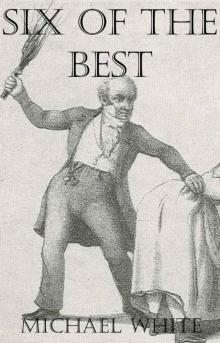 Six of the Best
Six of the Best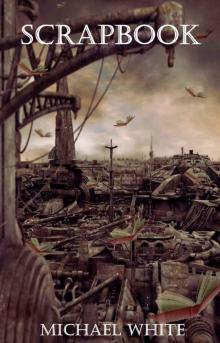 Scrapbook
Scrapbook Bob the Balloon, Al Capone and the Two Bob Bouncer
Bob the Balloon, Al Capone and the Two Bob Bouncer The King of the Cogs
The King of the Cogs A Bad Case of Sigbins
A Bad Case of Sigbins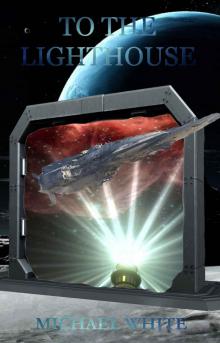 To the Lighthouse
To the Lighthouse Overboard!
Overboard!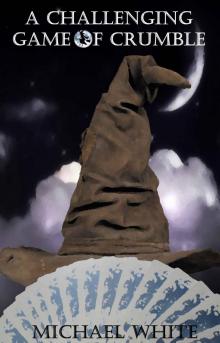 A Challenging Game of Crumble
A Challenging Game of Crumble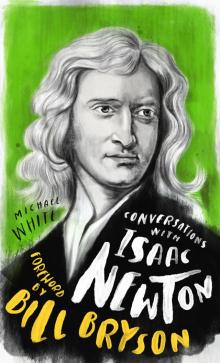 Conversations With Isaac Newton
Conversations With Isaac Newton The Complete Adventures of Victoria Neaves & Romney
The Complete Adventures of Victoria Neaves & Romney Liverpool Revisited
Liverpool Revisited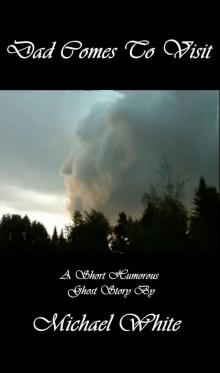 Dad Comes to Visit
Dad Comes to Visit Lachmi Bai, Rani of Jhansi: The Jeanne D'Arc of India
Lachmi Bai, Rani of Jhansi: The Jeanne D'Arc of India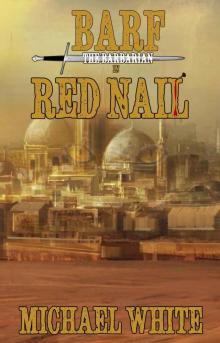 Barf the Barbarian in Red Nail (The Chronicles of Barf the Barbarian Book 2)
Barf the Barbarian in Red Nail (The Chronicles of Barf the Barbarian Book 2)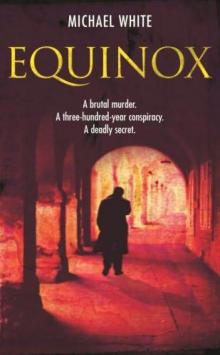 Equinox
Equinox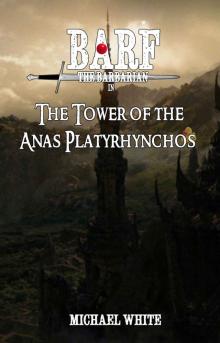 Barf the Barbarian in The Tower of the Anas Platyrhynchos (The Chronicles of Barf the Barbarian Book 1)
Barf the Barbarian in The Tower of the Anas Platyrhynchos (The Chronicles of Barf the Barbarian Book 1)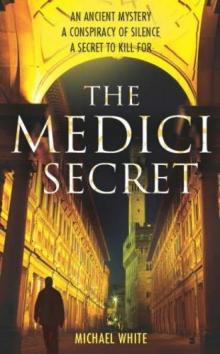 The Medici secret
The Medici secret Jack Pendragon - 02 - Borgia Ring
Jack Pendragon - 02 - Borgia Ring The Art of Murder jp-3
The Art of Murder jp-3 Travels in Vermeer
Travels in Vermeer